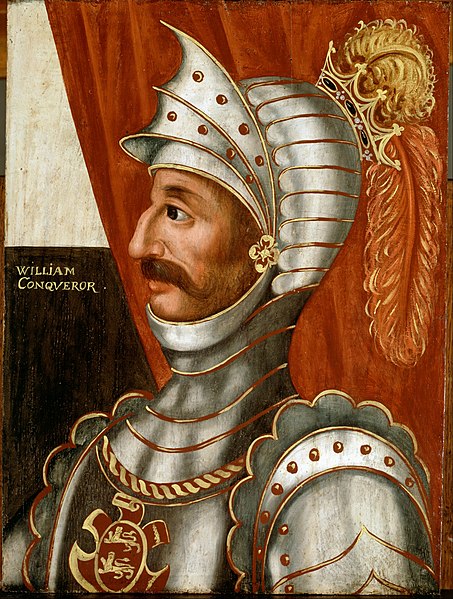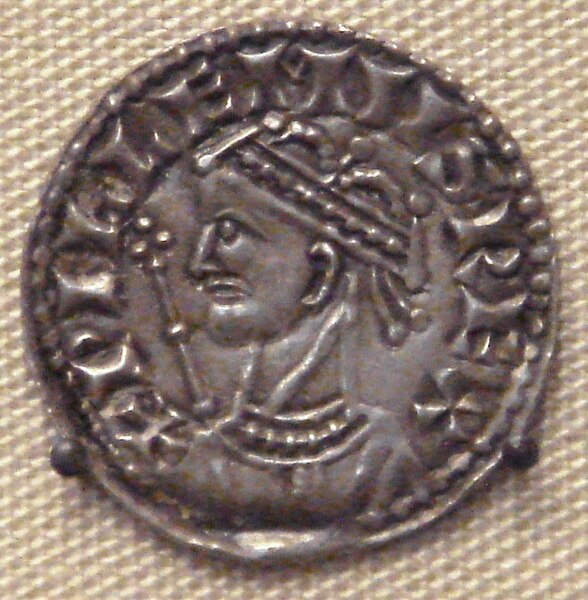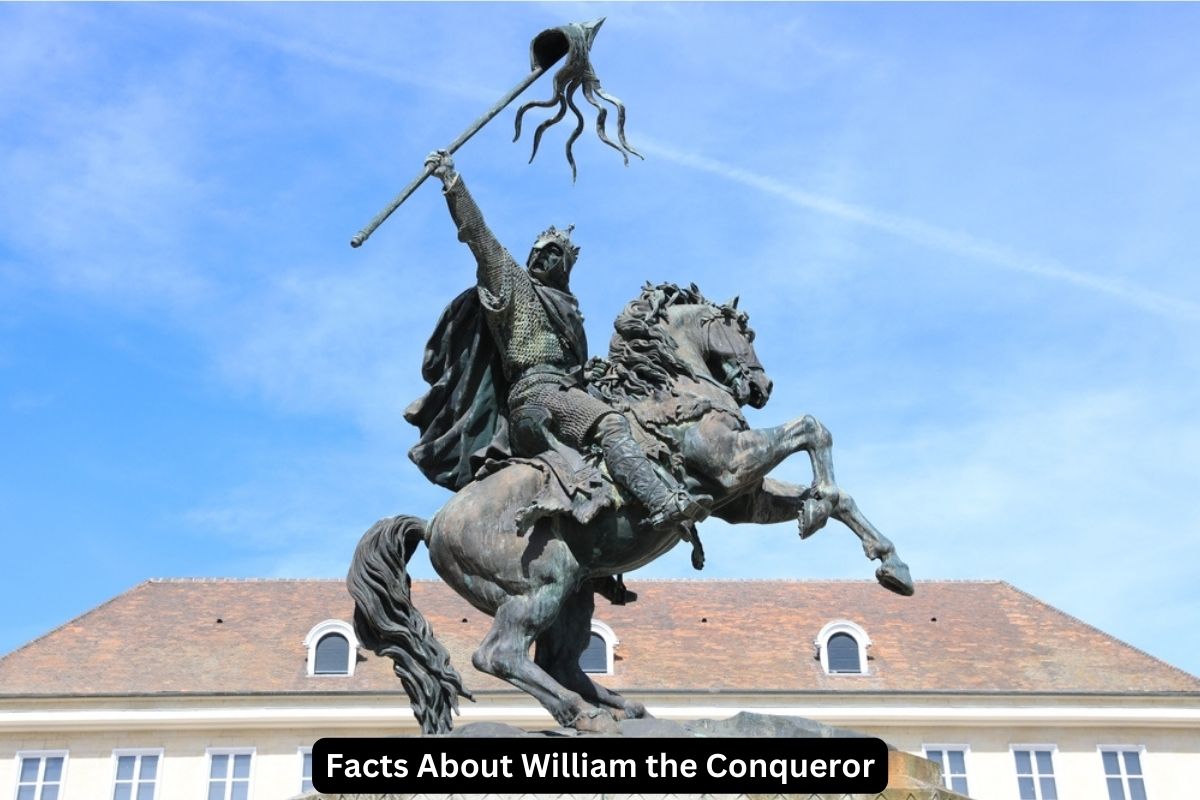William the Conqueror, also known as William I of England, was a formidable and transformative figure in medieval European history. Born in the early 11th century in Falaise, Normandy, William’s life unfolded against a backdrop of political turmoil and dynastic struggles.
Despite his illegitimate birth, he ascended to become the Duke of Normandy at a young age, embarking on a journey that would culminate in one of the most significant events in English history: the Norman Conquest of England in 1066.
This conquest not only changed the course of England’s monarchy but also left an indelible mark on its culture, language, and social structure.
In this exploration of William the Conqueror’s life and legacy, we will delve into the key events and accomplishments that defined his reign and continue to shape our understanding of medieval England.
William the Conqueror Facts
1. Born around 1028 in Falaise, Normandy, France
William the Conqueror was born around 1028 in Falaise, Normandy, France. His birth name was Guillaume le Bâtard, which translates to William the Bastard, as he was born out of wedlock.
Also Read: Facts About the Battle of Hastings
His mother, Herleva, was the daughter of a tanner, and his father, Robert the Magnificent, was the Duke of Normandy. William’s illegitimate status initially posed challenges to his eventual rise to power.

2. Became Duke of Normandy at age seven
William became the Duke of Normandy in 1035 at the tender age of seven, following the death of his father, Robert the Magnificent.
His childhood and adolescence were marked by political instability and challenges to his rule, as various factions within Normandy vied for control.
Also Read: Normans Facts
Despite these challenges, William’s upbringing was overseen by several mentors who helped prepare him for the responsibilities of leadership.
3. Conquered England in 1066 at the Battle of Hastings
William’s most famous achievement came in 1066 when he successfully conquered England. This conquest was a result of a complex web of political and personal relationships.
The primary event leading to the conquest was the Battle of Hastings, fought on October 14, 1066. William and his Norman forces faced off against King Harold II and the English army. After a fierce battle, King Harold was killed, and his forces defeated.
This victory paved the way for William’s coronation as King of England on Christmas Day 1066 at Westminster Abbey.
4. Crowned King of England on Christmas Day 1066
After his pivotal victory at the Battle of Hastings on October 14, 1066, William the Conqueror’s path to the English throne became inexorable. With the defeat and death of King Harold II of England, who had previously been crowned, William’s claim to the throne was solidified.
Following a few weeks of strategic movements and consolidating his control over key English cities, William made his way to London. The city resisted his conquest, but by early December, he had secured its surrender. This set the stage for his coronation as King of England.
On December 25, 1066, in a momentous and symbolic ceremony at Westminster Abbey in London, William the Conqueror was crowned as the King of England.
This date, Christmas Day, was chosen deliberately for its religious significance, signifying William’s determination to be seen as the rightful and anointed ruler of England.
5. Commissioned the Domesday Book in 1085-1086
After becoming the King of England, William I commissioned the Domesday Book, also known as the “Domesday Survey” or “Book of Winchester,” in 1085-1086. This comprehensive survey was undertaken to assess the wealth and resources of England.
The primary purpose of the Domesday Book was to help William and his administration determine the amount of land, livestock, and other taxable assets in the kingdom.
It was an invaluable resource for taxation and governance, providing detailed records of landownership, population, and economic activity in England at the time. The Domesday Book remains a vital historical document for studying medieval England and its society.

6. Introduced feudalism to England
One of William’s most significant contributions to England was the introduction of feudalism. Following the Norman Conquest, he redistributed land to his loyal Norman nobles and military supporters in exchange for their military service and loyalty.
This system of land tenure and reciprocal obligations formed the basis of medieval English society. Under feudalism, the king owned all the land, and landholders, known as vassals or tenants-in-chief, received land grants (fiefs) in exchange for military service and other duties.
This system helped William consolidate his control over England and maintain stability.
7. Conducted the Harrying of the North in 1069-1070
In 1069-1070, William ordered a brutal campaign in northern England known as the “Harrying of the North.” This campaign was a response to ongoing resistance and uprisings by the English in the northern regions.
To suppress this resistance and establish his authority, William’s forces devastated the region. They employed a scorched-earth policy, systematically destroying towns, crops, and livestock, leading to widespread famine and suffering.
The Harrying of the North was a ruthless campaign that left a lasting legacy of devastation in the region and served as a warning to those who opposed William’s rule.
8. Had a significant influence on English language and culture
William’s reign had a profound influence on English culture. After the Norman Conquest, the Norman elite introduced their language, Old Norman (a variant of Old French), to England.
Over time, Old Norman merged with Old English to form Middle English. This linguistic fusion contributed significantly to the development of the English language as we know it today.
Additionally, Norman customs and traditions, including chivalry and courtly manners, began to shape English society and culture.
9. Died on September 9, 1087, in Rouen, Normandy
William the Conqueror died on September 9, 1087, in Rouen, Normandy. His death followed a serious injury he sustained when he fell from his horse while besieging the town of Mantes.
This injury led to complications, and he succumbed to his wounds at the age of around 59. His death marked the end of his nearly 21-year reign as King of England.
10. Left a lasting legacy on English history and monarchy.
William the Conqueror’s legacy is enduring. His conquest of England in 1066 and the establishment of Norman rule laid the foundation for the Angevin Empire, which expanded Norman influence across England and parts of France.
His reign marked a turning point in English history, as it blended Anglo-Saxon and Norman traditions, influencing the development of English law, governance, and culture.
The Norman legacy can still be seen in the English language, architecture, and legal system. Additionally, the Domesday Book, which he commissioned, remains a vital historical record of medieval England.
